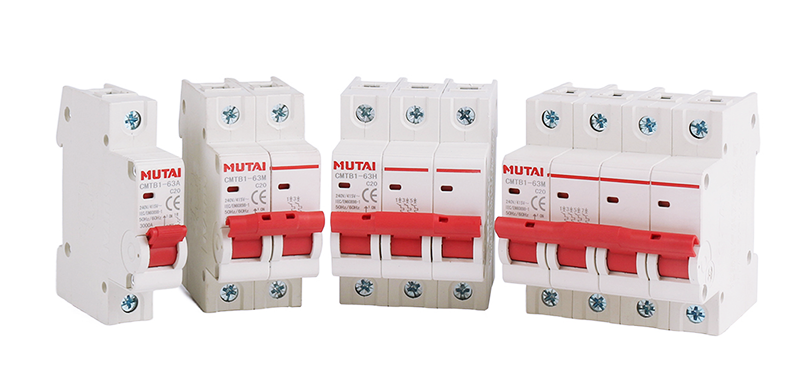Today, we’ll take a closer look at the complex workings of miniature circuit breakers (MCB) and learn how they play a critical role in keeping circuits and equipment safe. MCBs are compact devices that protect circuits from overcurrent and short circuits. They are designed to protect lines and equipment from potential damage by interrupting the flow of electricity when it exceeds safe levels. In this article, we will focus on two key protection principles inside miniature circuit breakers: overload protection and short-circuit protection, and explore how these principles work together to maintain safe and efficient operation of electrical systems.
First, let’s understand the principle of overload protection. The main function of overload protection is to prevent the current in a circuit from exceeding its rated capacity. When the current exceeds the rating, it can cause wires and equipment to overheat, creating a significant fire hazard. The principle of overload protection in MCBs is based on thermal effects. When the current in the circuit exceeds the set value, the bimetallic piece of the thermal element in the miniature circuit breaker is heated by the current, causing its temperature to rise. Once the temperature reaches a critical level, the thermal element deforms, causing the bimetal to bend upward, pushing a lever to open the locked latch. This action causes the MCB to trip, effectively cutting off the circuit and preventing excess current from flowing further.
Moving on to the second key protection principle, short circuit protection plays a key role in quickly identifying and mitigating sudden current surges. A short circuit occurs when the current in a circuit suddenly rises to extremely high levels, usually due to a fault or short circuit between wires. This poses a significant risk to both equipment and personnel. The MCB is equipped with an electromagnetic trip unit that is well capable of detecting rapid increases in current. When a short circuit is detected, the electromagnetic release creates a strong suction force that attracts the ejector and causes the locked latch to open. Instantly cuts off the power supply to prevent large currents from passing through, effectively protecting circuits and equipment from potential damage.
In summary, the two protection principles of overload protection and short-circuit protection help maintain the safe and efficient operation of circuits and equipment. MCBs are critical components of electrical systems and are designed to ensure seamless operation of electrical infrastructure while mitigating risks associated with overcurrent and short circuits. With its compact design and powerful protection mechanisms, MCB provides a reliable and effective solution for protecting electrical systems in a variety of applications, from residential properties to industrial facilities. By understanding the complex workings of MCBs and their critical role in protecting circuits, we can ensure the safety and longevity of our electrical infrastructure.
Mutai Group has accumulated more than ten years of manufacturing and sales experience in circuit breakers, contactors, dual power automatic transfer switches (ATS) and related fields. We eagerly look forward to the opportunity to work with you.
Post time: Jan-19-2024
 Phone: +86 18066376807
Phone: +86 18066376807 E-mail: ellen.zheng@mutaiele.com
E-mail: ellen.zheng@mutaiele.com









